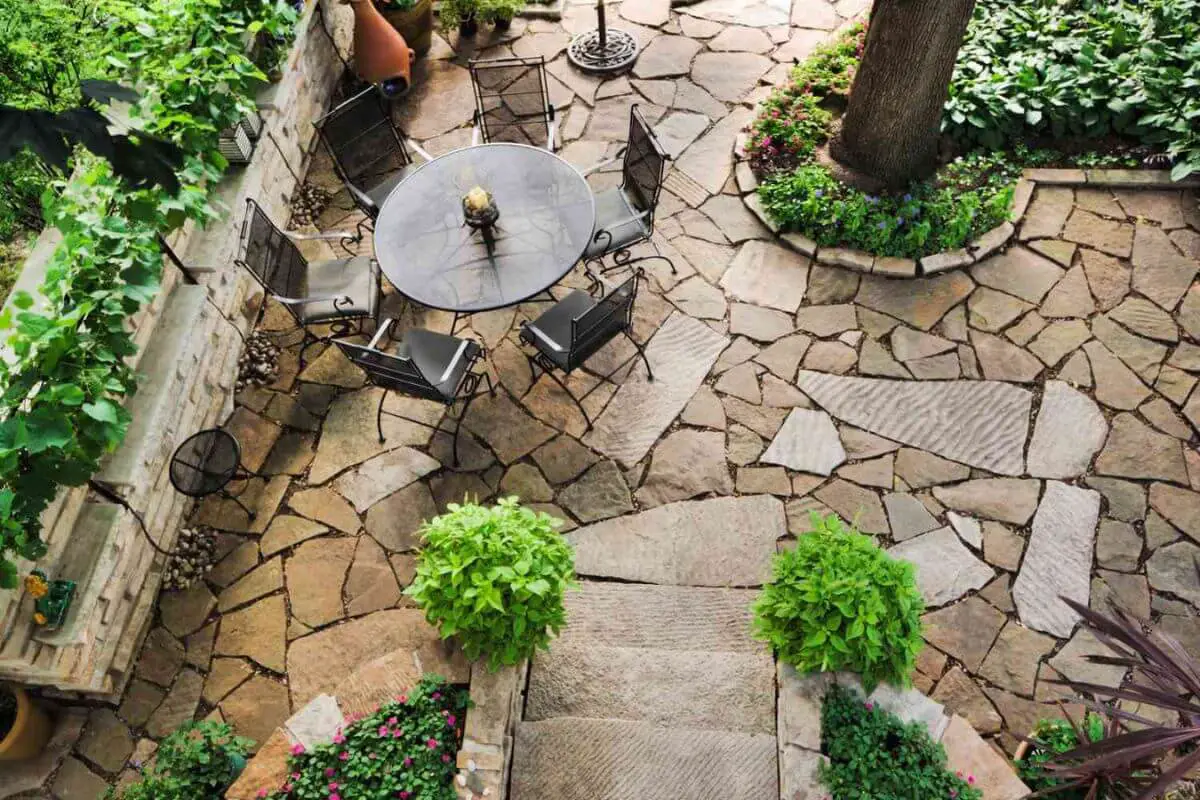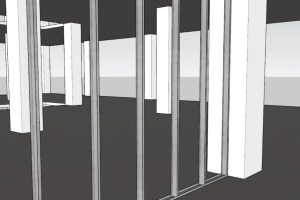Introduction
When it comes to creating a stunning and durable flagstone patio, the choice between using mortar or sand as the foundation is crucial. Both options have their merits, but understanding the differences and benefits of each can help you make an informed decision. In this article, we’ll dive into the world of flagstone patio construction, exploring the pros and cons of using mortar versus sand as the base material.
The Basics of Flagstone Patios
Flagstone patios are a popular choice for outdoor spaces, offering a natural and rustic charm that complements various architectural styles. These flat, irregularly shaped stones are laid out in a pattern to create a visually appealing and functional outdoor area. However, the foundation upon which your flagstone patio is constructed can significantly impact its overall performance and lifespan.
Flagstone Patio Foundation: Mortar vs Sand
The foundation of a flagstone patio serves as its base and is responsible for providing stability and support to the stones above. When it comes to choosing between mortar and sand, both options have their distinct advantages and considerations.

Advantages of Using Mortar
Mortar is a mixture of cement, sand, and water that creates a strong and durable bond between the flagstones. Using mortar as the foundation for your patio offers several benefits:
- Stability: Mortar creates a solid and stable base, reducing the risk of shifting and settling over time.
- Weed Prevention: Mortar minimizes the growth of weeds and plants between the stones, enhancing the patio’s appearance.
- Enhanced Durability: Mortar provides excellent resistance to heavy foot traffic and adverse weather conditions.
Benefits of Using Sand
Sand, on the other hand, offers its own set of advantages as a flagstone patio foundation:
- Flexibility: Sand allows for slight movement of the stones, accommodating ground shifts without cracking.
- Natural Drainage: Sand provides natural drainage, preventing water from pooling and promoting a healthier patio environment.
- Ease of Repairs: Individual stones can be easily lifted and replaced without disturbing the entire patio surface.
Factors to Consider When Choosing
The choice between mortar and sand for your flagstone patio foundation should take into account various factors:
- Climate: Consider your region’s climate and weather patterns. Mortar may be more suitable for areas with extreme conditions, while sand is ideal for regions with heavy rainfall.
- Intended Use: Determine how you plan to use the patio. Mortar is recommended for high-traffic areas, while sand is suitable for leisurely spaces.
- Aesthetics: Think about the look you want to achieve. Mortar provides a more polished appearance, while sand offers a more natural and rustic charm.
Installation Process for Mortar-Based Patios
Creating a mortar-based flagstone patio involves the following steps:
- Excavation: Prepare the site by digging a proper foundation and leveling the ground.
- Base Layer: Lay a compacted layer of gravel for drainage and stability.
- Mortar Application: Spread mortar in small sections and press the flagstones into place.
- Joint Filling: Fill the gaps between stones with mortar and brush away excess.
- Curing: Allow the mortar to cure and set before using the patio.
Installation Process for Sand-Based Patios
For a sand-based flagstone patio, the installation process includes:
- Site Preparation: Excavate and level the area, ensuring proper drainage.
- Laying Landscape Fabric: Prevent weed growth by adding landscape fabric over the excavated area.
- Sand Bedding: Spread a layer of sand and level it to create an even surface.
- Stone Placement: Set the flagstones on the sand, leaving small gaps between them.
- Joint Stabilization: Fill the gaps with polymeric sand and compact it to secure the stones.
Maintaining Mortar and Sand Foundations
Proper maintenance is essential to ensure the longevity of your flagstone patio:
- Mortar Patios: Periodically inspect for cracks or erosion in the mortar, and repair as needed.
- Sand Patios: Reapply polymeric sand as it naturally erodes over time.
Durability and Longevity
Mortar-based patios generally have a longer lifespan due to the rigid and stable foundation they provide. Sand-based patios may require occasional adjustments but can also last for many years with proper care.
Aesthetics and Design Options
The choice of foundation can influence the overall look of your patio. Mortar provides a clean and structured appearance, while sand offers a more relaxed and natural aesthetic.
Environmental Considerations
Sand is the more environmentally friendly option, as it allows water to permeate the ground and reduces runoff. Mortar may hinder natural water flow.
Budget-Friendly Options
Sand-based patios are often more cost-effective upfront, as mortar requires additional materials and labor.
Choosing the Right Option for Your Project
Consider your preferences, budget, and practical needs when deciding between mortar and sand for your flagstone patio foundation.
Expert Tips for Successful Installation
- Mortar: Ensure an even mortar application to prevent uneven settling.
- Sand: Use a compactor to properly set the sand and flagstones in place.
Conclusion
In the debate of flagstone patio mortar vs sand, both options have their merits. Mortar provides stability and durability, making it suitable for high-traffic areas, while sand offers flexibility and a more natural aesthetic. Ultimately, the decision depends on your specific requirements and vision for your outdoor oasis.
FAQs
- Can I switch from a sand foundation to a mortar foundation later? Yes, it is possible, but it may require lifting and resetting the flagstones.
- How often should I reapply polymeric sand to my sand-based patio? Reapplication every 1-2 years is recommended, depending on usage and erosion.
- Can I use mortar for a DIY flagstone patio project? Yes, but proper preparation and application are crucial for a successful result.
- Which option is better for a sloped patio? Sand is often preferred for sloped areas due to its flexibility and drainage properties.
- Is it necessary to seal a mortar-based flagstone patio? Sealing can enhance the longevity and appearance of the patio, but it’s optional.



